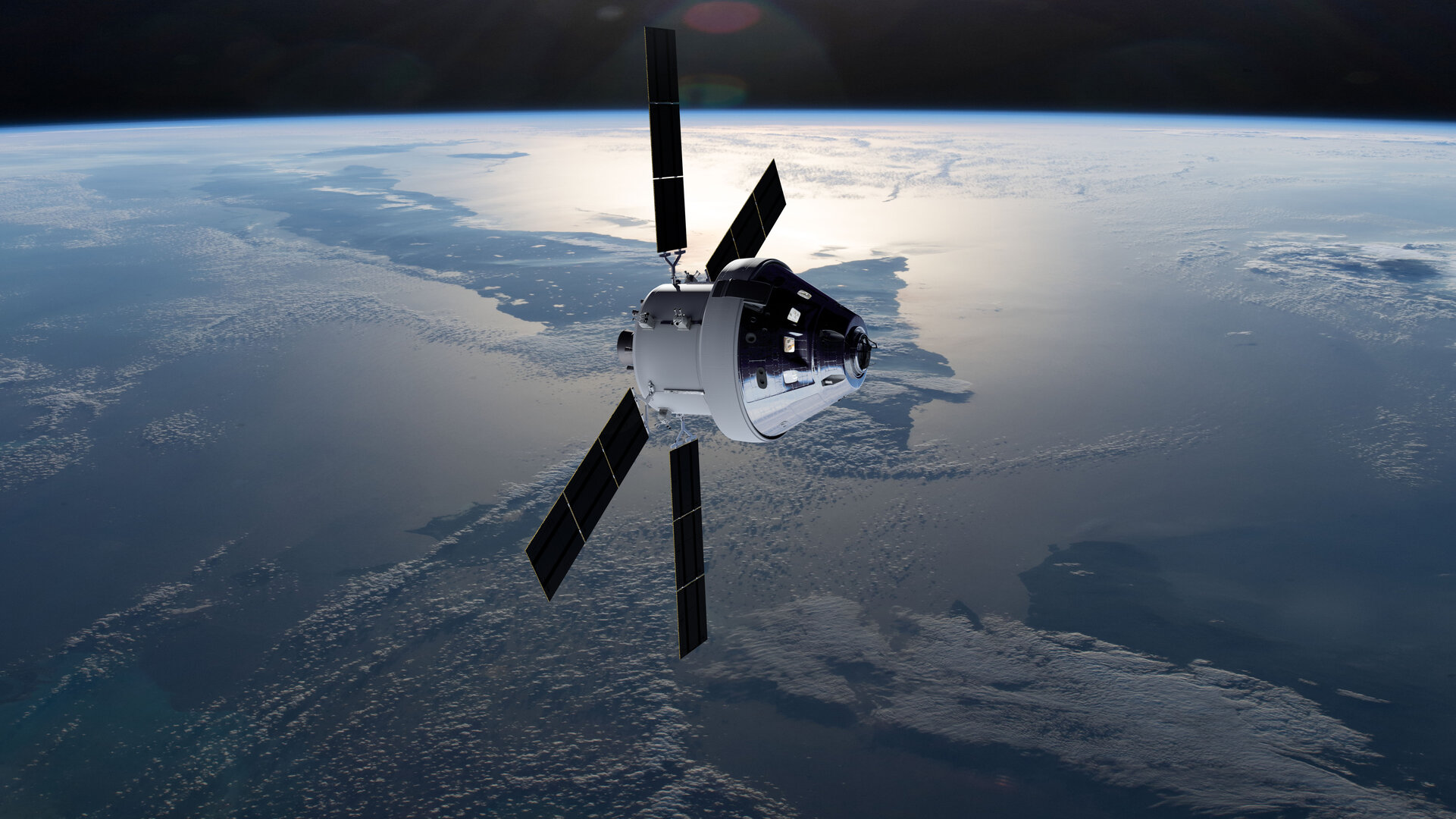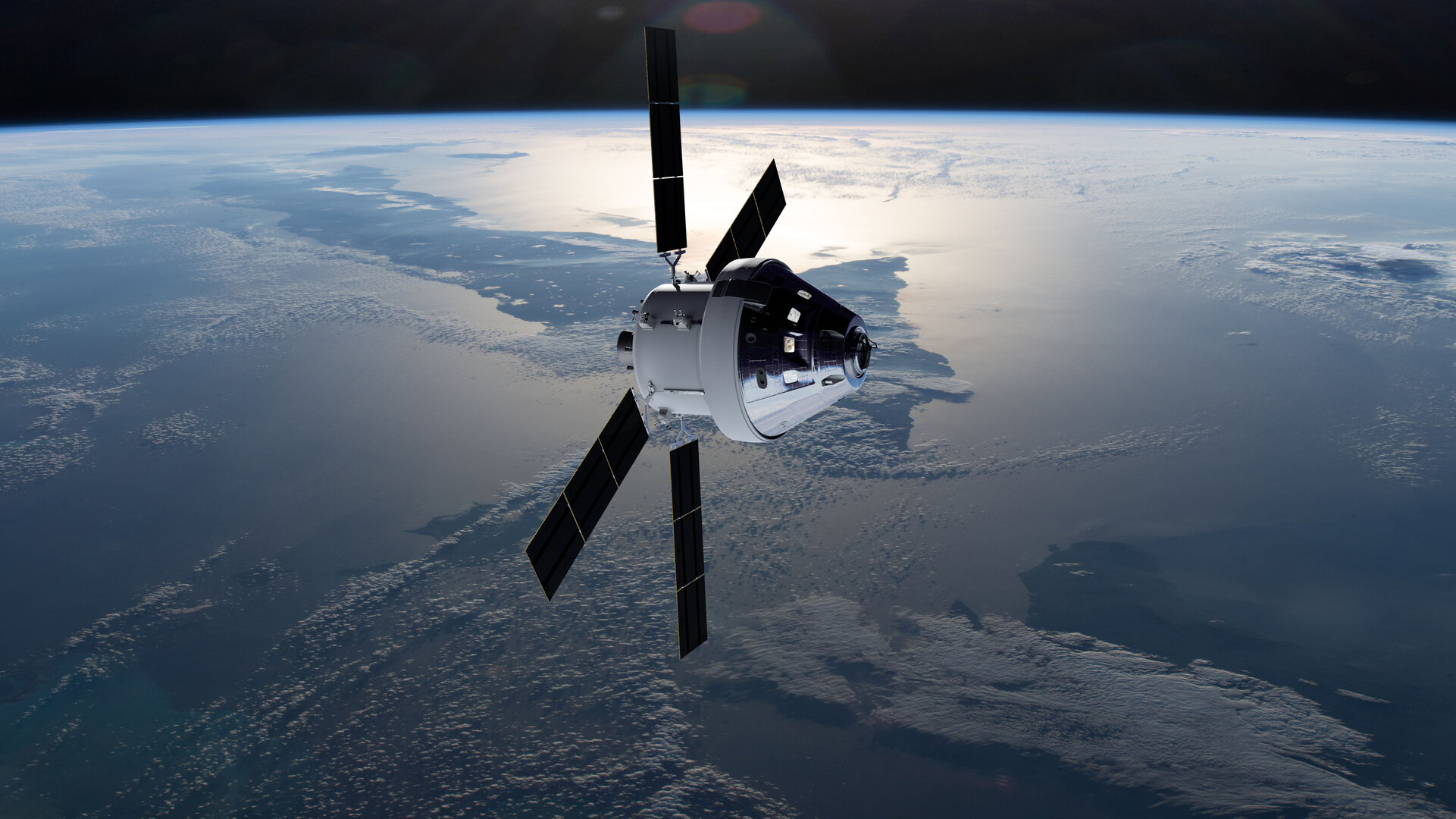
What To Expect On NASA’s Artemis II Mission
Each day we are getting closer to returning humans to the Moon for the first time in nearly 50 years. However, before sending a crew to the surface, NASA has multiple missions scheduled to ensure everything goes according to plan. As of right now, the Space Launch System is attempting to finish its wet dress rehearsal before Artemis I, the first flight of SLS.
After Artemis I, assuming everything goes according to plan, Artemis II will be the next mission. This launch is expected to host many firsts including the Space Launch System sending astronauts all the way to the Moon. However, during this mission there is no plan to land on the surface of the Moon, instead, Orion with the crew on board will utilize the Earth-Moon gravity field to naturally pull Orion back to Earth.
This mission has many different goals and milestones and will be a deciding factor in the next step, which involves putting humans back on the surface. While exciting, it also highlights how difficult that task is and the importance of each mission before Artemis III. Here I will go more in-depth into the mission overview, when it’s expected to happen, and other important information.
Artemis II

With the first uncrewed SLS test flight expected to happen only months from now during the Summer, we are getting closer to the first crewed flight. Here, astronauts on their first flight aboard NASA’s Orion spacecraft will travel farther into the solar system than humanity has ever traveled before. Their mission will be to confirm all of the spacecraft’s systems operate as designed with crew aboard in the actual environment of deep space. The Artemis II flight test will be NASA’s first mission with crew and will pave the way to land humans on the Moon on Artemis III. Building on those early missions, NASA’s Artemis program will return humans to the Moon for long-term exploration and future missions to worlds beyond, including Mars. “The unique Artemis II mission profile will build upon the uncrewed Artemis I flight test by demonstrating a broad range of SLS and Orion capabilities needed on deep space missions,” said Mike Sarafin, Artemis mission manager. “This mission will prove Orion’s critical life support systems are ready to sustain our astronauts on longer duration missions ahead and allow the crew to practice operations essential to the success of Artemis III.”
While this mission doesn’t involve landing on the surface of the Moon, it still is a very ambitious mission with multiple firsts. The mission will launch a crew of four astronauts from NASA’s Kennedy Space Center in Florida in 2024 on a Block 1 configuration of the Space Launch System (SLS) rocket. It was originally planned to happen in 2023 but has since been pushed back. Even the 2024 estimate could be ambitious depending on the agency’s progress over the next few years. The flight profile is called a hybrid free return trajectory. Orion will perform multiple maneuvers to raise its orbit around Earth and eventually place the crew on a lunar free return trajectory in which Earth’s gravity will naturally pull Orion back home after flying by the Moon. The initial launch will be similar to Artemis I as SLS lofts Orion into space, and then jettisons the boosters, service module panels, and launch abort system, before the core stage engines shut down and the core stage separates from the upper stage and the spacecraft. With crew aboard this mission, Orion and the upper stage, called the interim cryogenic propulsion stage (ICPS), will then orbit Earth twice to ensure Orion’s systems are working as expected while still close to home. The spacecraft will first reach an initial orbit, flying in the shape of an ellipse, at an altitude of about 115 by 1,800 miles. The orbit will last a little over 90 minutes and will include the first firing of the ICPS to maintain Orion’s path. After the first orbit, the ICPS will raise Orion to a high-Earth orbit. This maneuver will enable the spacecraft to build up enough speed for the eventual push toward the Moon. The second, larger orbit will take approximately 42 hours with Orion flying in an ellipse between about 235 and 68,000 miles above Earth. For perspective, the International Space Station flies in a nearly circular Earth orbit about 250 miles above our planet.
Following the proximity operations demonstration, the crew will turn control of Orion back to mission controllers at Johnson and spend the remainder of the orbit verifying spacecraft system performance in the space environment. They will remove the Orion Crew Survival System suit they wear for launch and spend the remainder of the in-space mission in plain clothes, until they don their suits again to prepare for reentry into Earth’s atmosphere and recovery from the ocean. While still close to Earth, the crew will assess the performance of the life support systems necessary to generate breathable air and remove the carbon dioxide and water vapor produced when the astronauts breathe, talk, or exercise. The long orbital period around Earth provides an opportunity to test the systems during exercise periods, where the crew’s metabolic rate is the highest, and a sleep period, where the crew’s metabolic rate is the lowest. A change between the suit mode and cabin mode in the life support system, as well as performance of the system during exercise and sleep periods, will confirm the full range of life support system capabilities and ensure readiness for the lunar flyby portion of the mission. Orion will also checkout the communication and navigation systems to confirm they are ready for the trip to the Moon. While still in the elliptical orbit around Earth, Orion will briefly fly beyond the range of GPS satellites and the Tracking and Data Relay Satellites of NASA’s Space Network to allow an early checkout of the agency’s Deep Space Network communication and navigation capabilities. When Orion travels out to and around the Moon, mission control will depend on the Deep Space Network to communicate with the astronauts, send imagery to Earth, and command the spacecraft. After completing checkout procedures, Orion will perform the next propulsion move, called the translunar injection (TLI) burn. With the ICPS having done most of the work to put Orion into a high-Earth orbit, the service module will provide the last push needed to put Orion on a path toward the Moon. The TLI burn will send the crew on an outbound trip of about four days and around the backside of the moon where they will ultimately create a figure eight extending over 230,000 miles from Earth before Orion returns home.
On the remainder of the trip, astronauts will continue to evaluate the spacecraft’s systems, including demonstrating Earth departure and return operations, practicing emergency procedures, and testing the radiation shelter, among other activities. The Artemis II crew will travel 4,600 miles beyond the far side of the Moon. From this vantage point, they will be able to see the Earth and the Moon from Orion’s windows, with the Moon close in the foreground and the Earth nearly a quarter-million miles in the background. With a return trip of about four days, the mission is expected to last just over 10 days. Instead of requiring propulsion on the return, this fuel-efficient trajectory harnesses the Earth-Moon gravity field, ensuring that—after its trip around the far side of the Moon—Orion will be pulled back naturally by Earth’s gravity for the free return portion of the mission. Following this mission, assuming everything was a success, the next step will be Artemis III. Here rather than just flying by the Moon astronauts will land on the surface. This will mark the beginning of future Moon exploration and more. “Together, these test flights will demonstrate the capabilities we need to land the first woman and next man on the Moon by 2024 and enable sustainable missions for decades to come,” said Sarafin. “We will take the experience gained exploring the Moon to prepare for the next giant leap to Mars.” Its missions like these that pave the way for different milestones and a bright future for space exploration. Artemis II is a key step in the future of not only returning humans to the Moon but setting up a more permanent human presence. Together, SLS and Orion are critical backbone capabilities, along with the Gateway in lunar orbit and a modern human landing system, that will enable human missions of increasing complexity in deep space.
Conclusion
It has been nearly half a century since the last time humans stepped foot on the Moon. Since then the space industry has made significant progress with innovation practically everywhere. All of which in an attempt to increase access to space in different ways. This includes Artemis which plans to return humans in only years from now. However, before this can happen NASA needs to ensure they are ready with multiple tests including Artemis I and Artemis II. We will have to wait and see how it progresses and the impact it has on the space industry.
